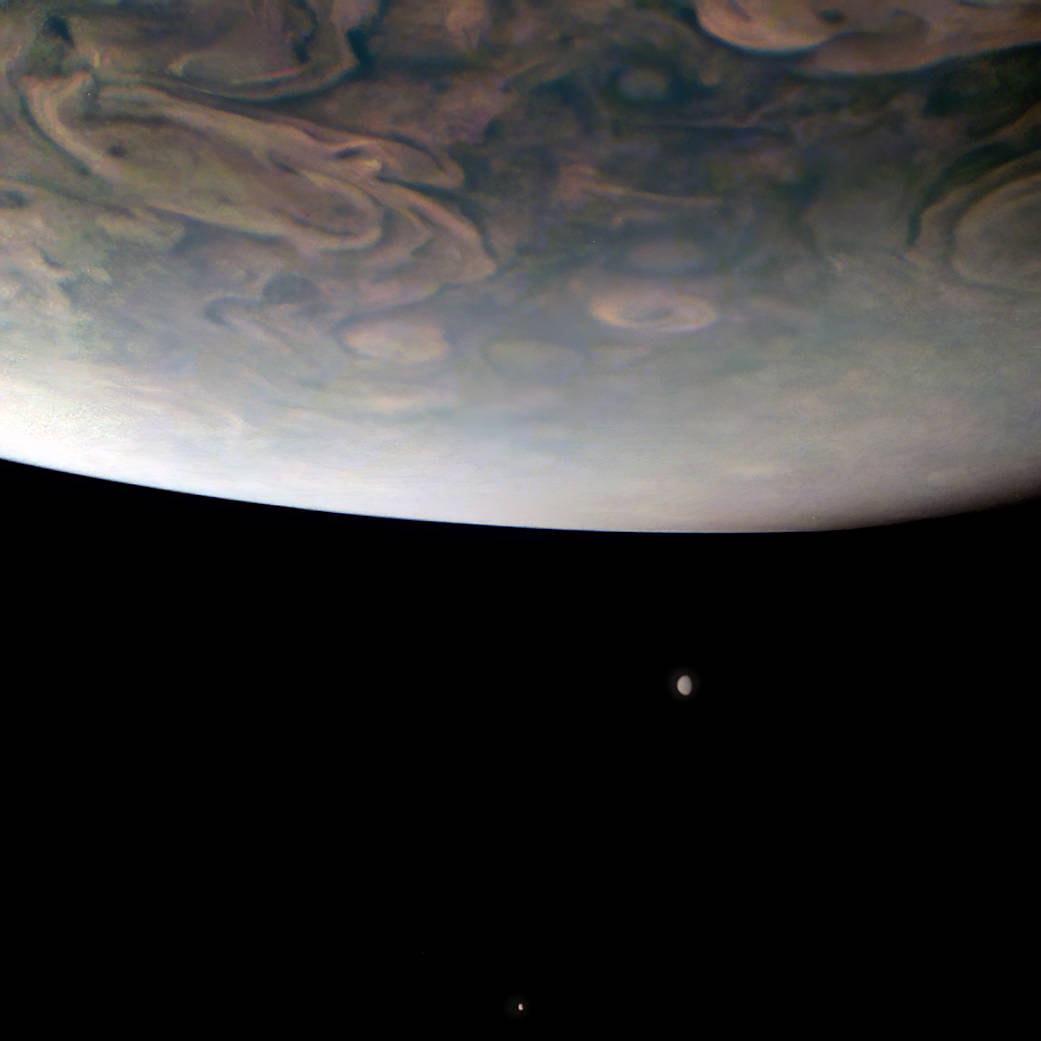NASA's Juno captures two of Jupiter’s largest moons

NASA's Juno spacecraft is on an extended mission to investigate Jupiter - our solar system's largest planet - through September 2025. During its 38th close flyby of the gas giant in November 2021, the JunoCam instrument onboard the spacecraft captured this look at the two jovian moons.
Visible in the foreground are hurricane-like spiral wind patterns called vortices that are spinning in the planet's north polar region. These powerful storms can be over 30 miles (50 kilometers) in height and hundreds of miles across. Below the planet's curving horizon, two of the largest Jovian moons - Callisto (below) and Io (above) - make an appearance:
Citizen scientist Gerald Eichstädt used raw JunoCam data to make the original version of this image, and then another citizen scientist, Thomas Thomopoulos, further processed it, zooming in and making color enhancements, NASA said.
By processing raw JunoCam data, citizen scientists provide unique perspectives and new insights.
Jupiter and its moons 😍#JunoMission sped low over Jupiter’s cloud tops, capturing Io and Callisto in the distance last November. Two citizen scientists made and processed this photo using raw JunoCam data.Learn more about this stunning image here: https://t.co/w8UvlzNGxR pic.twitter.com/aTOLwNCDny
— NASA JPL (@NASAJPL) November 18, 2022
Juno entered orbit around Jupiter on July 4, 2016, becoming the first explorer to peer below the planet's dense clouds. It is scheduled to make close flybys of Io in December 2023 and February 2024, the first such close encounters with this intriguing moon in over two decades.
According to NASA, Io is the most volcanic body in our solar system, and its eruptions leave a trail of material behind that both fills the Jovian magnetosphere and creates a torus of gas and dust around the planet. During the upcoming close encounters, Juno will study Io's volcanoes and geology, search for signs of a magma ocean, and investigate how Io interacts with Jupiter's giant magnetosphere.










